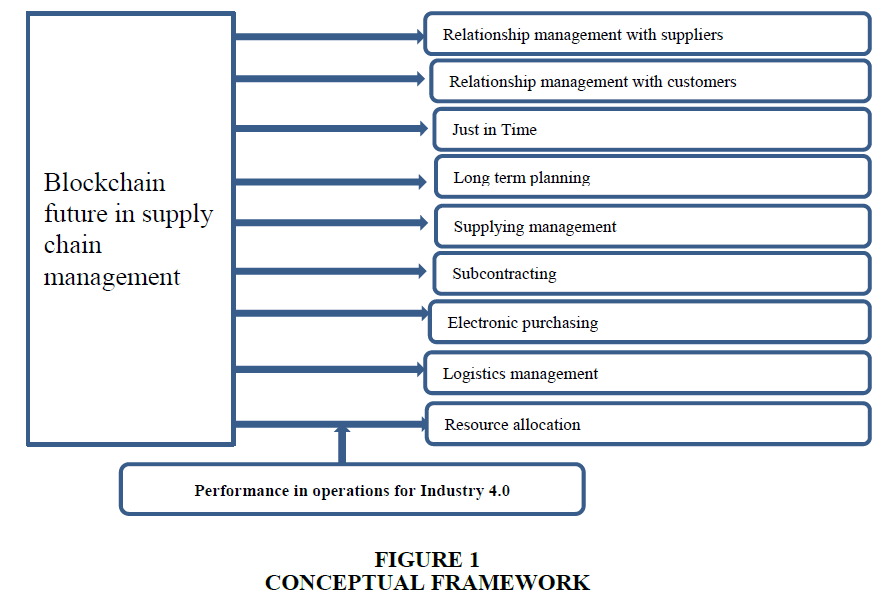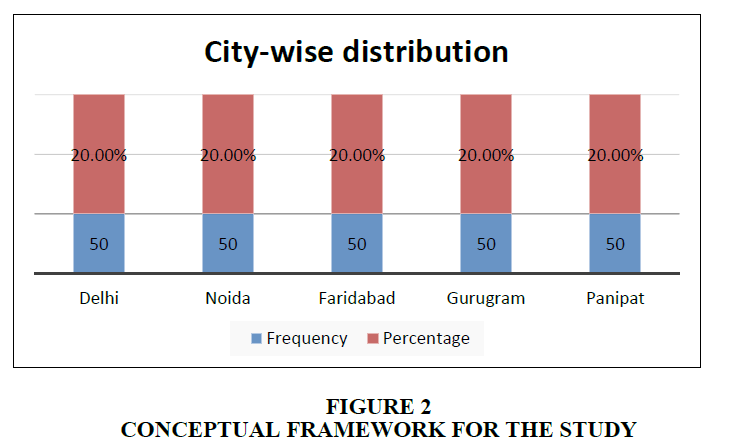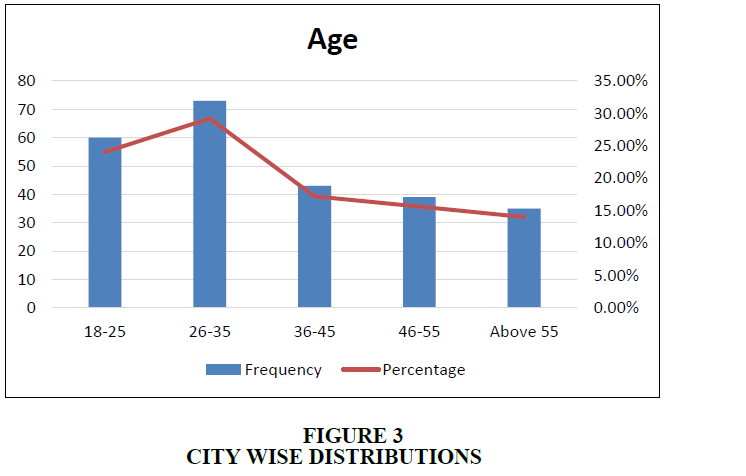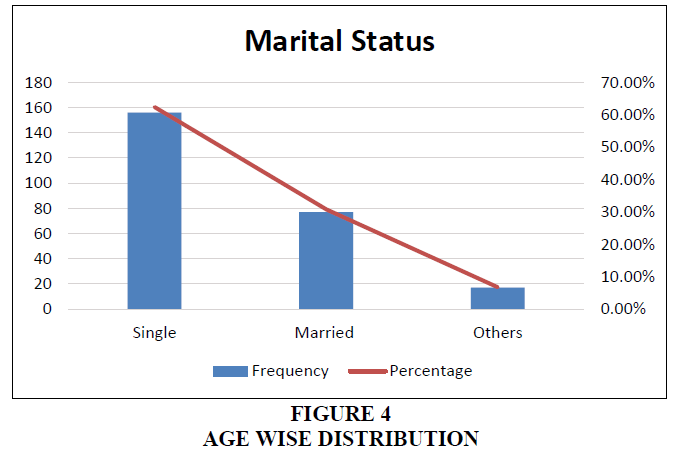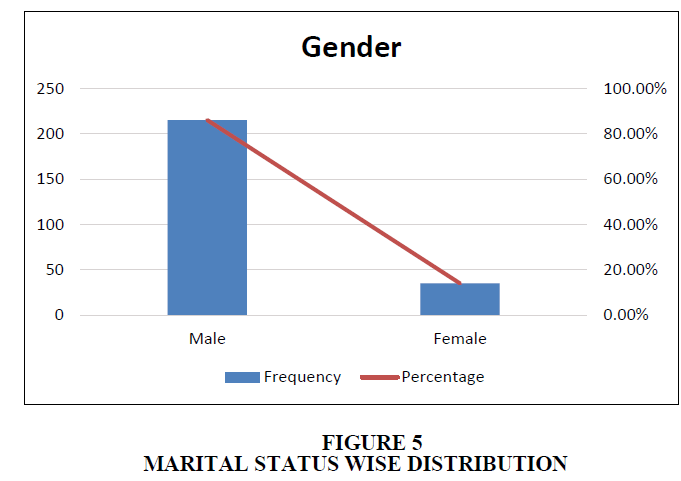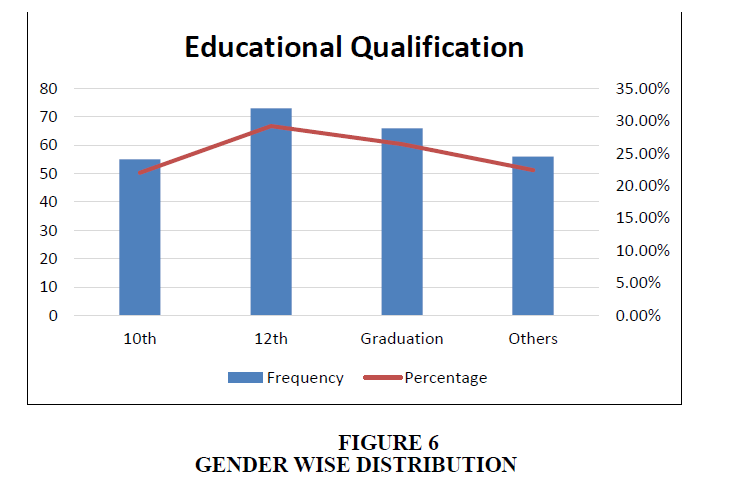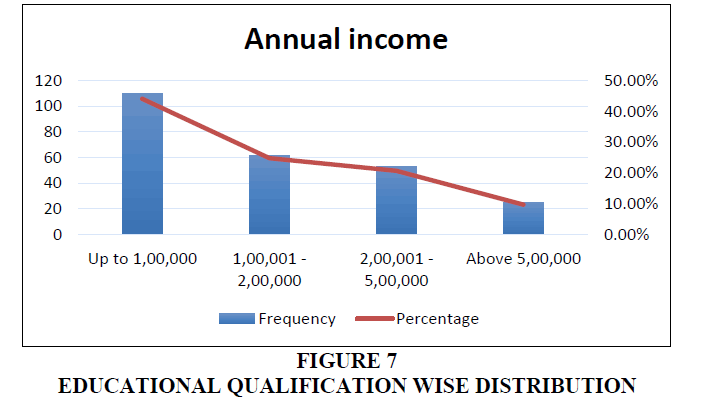Review Article: 2023 Vol: 27 Issue: 6
Blockchain for the Future of Sustainable Supply Chain Management in Industry 4.0
Veena Prasad Vemuri, NKES College of Arts Commerce and Science, Mumbai, Maharashtra
Somanchi Hari Krishna, Vignana Bharathi Institute of Technology, Telangana
Chetan V Hiremath, Kirloskar Institute of Management, Karnataka
Dinesh Gupta, MIT World Peace University, Pune Maharashtra
Citation Information: Majan, K., Mishra, A., Tiwari, V., & Prasad Vemuri, V. (2024). Blockchain for the Future of Sustainable Supply chain Management in Industry 4.0. Academy of Marketing Studies Journal, 27(6), 1-11.
Abstract
This research aims to present an overview of Blockchain technology and Industry 4.0 with the purpose of promoting practices in Sustainable supply chains management. This study is primary and exploratory in nature. The sample size of the study was 250 employees working in oil industry as respondents residing in Pune, Maharashtra. The responses obtained from structured questionnaire. Confirmatory Factor Analysis is performed in the study. The variables under study were relationship management with suppliers, relationship management with customers, Just in Time, Long term planning, supplying management, subcontracting, electronic purchasing, logistics management and resource allocation. The conceptual model also framed. This study's findings reveal that SCM methods have a favorable and significant effect on the operational performance of the Pune, Maharashtra business sector. In spite of the fact that integration is unnecessary for many SCM methods, they may have a considerable effect on the operational effectiveness of particular Sustainable. By incorporating Blockchain technology into supply chain management (SCM) processes in real time, researchers can explore novel avenues for enhancing business effectiveness.
Keywords
Blockchain, Industry 4.0; Operational Performances; Practices; Supply chain.
Introduction
New companies can emerge because of the quickening pace of technology development, which is also increasing global competitiveness and decreasing company lifespans. Innovations in technology are influencing the necessity of new management strategies, which in turn is altering traditional forms of business organisations “Min, et al, (2019)”. Supply chains are entering a whole new competitive landscape as a result of this influence “Hussien, et al. (2019)”. Supply chain management's (SCM) primary goal is integration, and a higher degree of integration may improve operational performance by decreasing demand unpredictability, supplier inefficiency, and transition lags, and so lowering business environment uncertainty. Real-time information systems, which incorporate nearly all cutting-edge innovations, are the most effective method of integration, the IoT, Robotics, Big Data, AI, Industry 4.0, ICTs, and Blockchain to name a few Cai, & Zhu (2016)”. Despite many years of study, web-based information sharing was not successfully implemented due to security concerns “Fatima, (2021)”.
Despite this, there is a level of risk involved when using the Internet for sensitive data and monetary transactions; as a result, there has been a lot of focus on studying cyber-physical systems and cyber-security. Blockchain, a new technology, offers unparalleled protection against cyberattacks. The adoption of Blockchain into supply chains has been the subject of many discussions among scholars, but a comprehensive study has yet to be conducted “Hussien, et al. (2019)”. But the issue remains, do supply chains really need to incorporate ideas like Blockchain? The solution to this kind of inquiry is crucial to grasp. When dealing with supply chains, especially those on a smaller or medium scale, the cost of adopting and implementing a new technical concept to replace an established practice might be high “Ramchandra, et al. (2022)”. Additional factors that inhibit Blockchain's widespread use in supply chain management include the unpredictability of the global economy and the lack of a clear regulatory structure, both for the smaller businesses that are hesitant to invest in Blockchain technology and for the larger ones that have already done so, mainly due to the absence of a standardized method for determining whether or not a given supply chain will benefit from the use of Blockchain technology “Agbo, et al. (2019)”.
Through this research, we present a paradigm for understanding the relationship between current SCM techniques and their effect on operational performance. In this study, we look into Blockchain's capabilities and compare them to supply chain management. It's possible for SCM procedures to vary from one supply chain to another, and even from one industry to another. Blockchain technology, which enables encrypted, in-the-moment data sharing, has recently gained notoriety as a promising new resource with which to improve business operations. Two factors led us to choose India's oil industry for this research and validation of the suggested framework. To begin, despite its obvious significance to the economy, this area has received comparatively little attention from academics. Also, the supply chain is extremely intricate.
Review Of Literature
The Blockchain records digital transactions in a decentralised and public ledger. This programme was created by Bitcoin, the first digital currency “Cai & Zhu (2016)”. Bitcoin transactions are conducted between untraceable individuals using cryptographically robust private keys “Brunese, et al. (2019)”. Every node in the network receives a copy of every transaction that occurs and is organised into blocks that are each given a hash that is used to uniquely identify each node. All network transactions are tracked by this sequence of blocks. “Fatima, (2021)” the term "Blockchain" used to be synonymous with Bitcoin, but in recent years it has expanded to encompass the underlying technology being used by other industries, because it has the potential to serve as a safe and reliable platform for exchanging data in real time, thereby fostering multifaceted and cross-sectoral integration “(Ghadge, et al. 2020)”. The commercial, judicial, financial, banking, healthcare, and instructional sectors are only some of the ones to have used blockchain technology. Blockchain technology has been used to create a digital distributed ledger for use in the logistics industry “(Chowdhury, et al., (2018))”. The same efficient, fast, and transparent benefits seen in the retail sector may be realized in the supply chain. Blockchain is being applied in a variety of settings due to its distinctive characteristics, which may be summed up as follows: real-time data exchange; internet safety; clarity; dependability; traceability; and discernibility.
These additions can facilitate a smoother evolution from antiquated to cutting-edge supply chain management “Kshetri, (2017)”. In complex supply chain networks, for instance, several vendors must coordinate their activities; as a result, they must use a central database to track and record all of their financial dealings related to the supply chain “Ojo, et al. (2018)”. As a result, a digital infrastructure that allows for the safe and instantaneous exchange of data is essential. Blockchain technology is one of the best ways to solve this issue. Many experts in the field have spoken out regarding the potential benefits and drawbacks of incorporating Blockchain technology into supply chains, as well as how the Blockchain itself would alter the nature of these networks “Srivastav, et al. (2019)” & made the observation that the performance of blockchains is considerably slower when compared to the performance of a typical or conventional based database. The cryptographic component of blockchain, which is widely regarded as one of the technology's most intriguing aspects, requires a significant amount of computational effort.
The Blockchain structure can be implemented into supply chains, according to one of the four proposed theories, which claims that the combination of these theories makes this possible. The resource-based view, principal-agent theory, the network theory, and the transaction-cost theory (also known as transaction-cost analysis) are all examples of these types of theories “Shi, et al. (2020)”. The resource-based perspective of the firm emphasizes the importance of a company's own resources and competencies as a source of competitive advantage. Potentially, blockchain could trigger processes with far-reaching effects on resources, capacities, and competitive advantages.
Information flows between principals and agents are described in detail by the principal-agent theory and agent gathers pertinent information from various sources (suppliers, consumers, stakeholders, etc.) on principal's behalf “Srivastava, et al. (2016)”. Thus, it is necessary for principal and agent to set up means of mutual confidence and oversight. Through the use of blockchain technology, agency problems can be resolved thanks to the openness, accessibility, and verifiability of the data exchanged between principal and agent “Sahi, et al. (2017)”. The factors that are driving the adoption of Blockchain technology in India's service sectors have been identified. The factors that are driving the adoption of blockchain technology are going to be identified, and this will factor into the formulation of policies and decisions at multiple levels. In addition to this, the interpretive structural modelling (ISM) technique used to suggest hierarchical model structures. This paper can be seen as a step toward a more substantial theory building in adoption research, specifically of Blockchain technology in the Indian context.
Supply chain management, which coordinates the activities of numerous businesses in a market via a complex web of direct and indirect links, and network theory, which explains the roles and management of inter-organizational relationships, both deal with the complexities of networks “(Shahnaz, et al. 2019)”. With its transparent, real-time information sharing, traceability, and non-reputability of data during information transit, blockchain is a great tool for improving the quality of relationships between organizations, especially in complicated networks. Although similar to network theory, transaction-cost analysis emphasizes transactions rather than connection management. Organizational form and scale are key variables that are analyzed by TCA, which focuses on transaction costs “Chouhan (2020)”. In order to distinguish itself from competitors, a BPO will either implement new technology or apply existing technology in a novel way in order to improve a process. “Tariq, et al., (2020)” investigated the problems associated with the scalability of blockchain technology; the systems are critical to adjusting and enhancing the procedure. Aside from these, one of the most important concepts in the world of business right now is the use of cryptocurrencies like Bitcoin. The problems include the amount of time required to reach a consensus and the amount of time required to include a transaction in a block.
Research Gap
Blockchain's immutability creates a cyber-secure platform for transactions, fostering traceability and transparency throughout the supply chain's transportation and logistics operations. Despite the wealth of Blockchain-related writing over the past few years, no definitive methodology has emerged for determining whether or not a supply chain should incorporate Blockchain. Using the oil supply-chain in India (Pune, Maharashtra), this research is an initial attempt to fill this void in order to create a decision-making framework prior to incorporating Blockchain into the supply-chain.
Objectives of the Study
1. To identify factors influencing the future of blockchain technology in Practices of supply chain management in Industry 4.0.
2. To quantitatively assess the future of blockchain technology in Practices of supply chain management in Industry 4.0.
Null Hypothesis of the study
1. H01: There is no significant relationship among the factors of blockchain technology and practices in supply chain management.
2. H02: There is no significant relationship among quantitatively assess the future of blockchain technology in Practices of supply chain management in Industry 4.0.
Alternate Hypothesis
1. Ha1: There is significant relationship among the factors of blockchain technology and practices in supply chain management.
2. Ha2: There is significant relationship among quantitatively assess the future of blockchain technology in Practices of supply chain management in Industry 4.0.
Research Methodology
This study is primary and exploratory in nature. The sample size of the study was 250 employees working in oil industry as respondents residing in Pune, Maharashtra. The responses obtained from structured questionnaire. Confirmatory Factor Analysis is performed in the study. The variables under study were relationship management with suppliers, relationship management with customers, Just in Time, Long term planning, supplying management, subcontracting, electronic purchasing, logistics management and resource allocation. The conceptual model also framed (Figure 1).
Result and Discussion
City wise distribution is conducted in Table 1 and it was found that all the selected city participants were equally responsive and participative in the study Figures 2 & 3.
| Table 1 City Wise Distribution |
||
|---|---|---|
| City wise distribution | Frequency | Percentage |
| Delhi | 50 | 20.00% |
| Noida | 50 | 20.00% |
| Faridabad | 50 | 20.00% |
| Gurugram | 50 | 20.00% |
| Panipat | 50 | 20.00% |
Table 2 stated the age wise distribution analysis and stated that majority of respondents having age of 26-35 years (N=73, 29.20%) followed by 18-25 years (N=60, 24%). The above 55 years (N=35, 14%) of age found to be least in the study Figure 4.
| Table 2 Age |
||
|---|---|---|
| Age | Frequency | Percentage |
| 18-25 | 60 | 24.00% |
| 26-35 | 73 | 29.20% |
| 36-45 | 43 | 17.20% |
| 46-55 | 39 | 15.60% |
| Above 55 | 35 | 14.00% |
Table 3 depicted the marital status of the study and documented that majority of respondents found to be single (N=156, 62.40%) followed by Married (N=77, 30.80%). Others (N=17, 7%) found to be least in the study.
| Table 3 Marital Status |
||
|---|---|---|
| Marital Status | Frequency | Percentage |
| Single | 156 | 62.40% |
| Married | 77 | 30.80% |
| Others | 17 | 7% |
Table 4 depicted the gender analysis and documented that male (N= 215, 86%) are more participative in the study followed by female (N=35, 14%). Male are more responsive found in the existing research Figures 4 & 5.
| Table 4 Gender |
||
|---|---|---|
| Gender | Frequency | Percentage |
| Male | 215 | 86.00% |
| Female | 35 | 14.00% |
Table 5 stated the educational qualification and found that majority of respondents having 12th (N= 73, 29.20%) pass out qualification followed by graduation (N=66, 26.40%) Figures 6 & 7.
| Table 5 Educational Qualification |
||
|---|---|---|
| Educational Qualification | Frequency | Percentage |
| 10th | 55 | 22.00% |
| 12th | 73 | 29.20% |
| Graduation | 66 | 26.40% |
| Others | 56 | 22.40% |
Table 6 documented the annual income of the study and found that majority of respondents’ annual income was up to 100000 (N=110, 44%) followed by 100001-200000 (N=62, 24.80%). Above 500000 (N=25, 10%) found to be least in the study.
| Table 6 Annual Income (Rs.) |
||
|---|---|---|
| Annual income (Rs.) | Frequency | Percentage |
| Up to 1,00,000 | 110 | 44.00% |
| 1,00,001 - 2,00,000 | 62 | 24.80% |
| 2,00,001 - 5,00,000 | 53 | 20.70% |
| Above 5,00,000 | 25 | 10% |
Table 7 documented the mean and standard deviation analysis and stated that Practices related to supply chain management having mean value 3.577 and standard deviation value .423. In case of performance in operations mean value is 4.829 and standard deviation value is .367. In case of correlation matrix estimated value is greater than 1.
| Table 7 Descriptive Statistics |
|||||
|---|---|---|---|---|---|
| Item | Variable | Mean | SD | 1 | 2 |
| 1 | Practices related to Supply chain management | 3.577 | .423 | .634** | |
| 2 | Performance in operations | 4.829 | .367 | .789** | |
Table 8 analyzed the path analysis and documented that estimated coefficient value was .734 and estimated t value was 6.78. The permissible value was 0.000 which is less than the significance value of .005.
| Table 8 T Test |
|||
|---|---|---|---|
| Relationship through path analysis | Estimated Coef?cient value | Estimated value of T test | Permissible Value |
| Practices related to Supply chain management→ Performance in operations | .734 | 6.78 | 0.000 |
Table 9 conducted the hypothesis testing and analyzed the relationship among the constructs and found that in all cases the permissible value was less than .005. Therefore, decision among all the constructs was accepted.
| Table 9 Hypothesis Testing |
||||
|---|---|---|---|---|
| Relationship through path analysis | Estimated Coef?cient value | Estimated value of T test | permissible Value | Decision |
| Relationship management with suppliers → Performance in operations | .645 | 4.888 | .000 | Accepted |
| Relationship management with customers → Performance in operations | .233 | 2.788 | .000 | Accepted |
| Just in time (JIT) → performance in operations | .324 | 3.234 | .005 | Accepted |
| Long term planning → Performance in operations | .356 | 3.568 | .004 | Accepted |
| Supplying Management → Performance in operations | .434 | 3.345 | .001 | Accepted |
| Subcontracting → Performance in operations | .532 | 3.567 | .004 | Accepted |
| Electronic Purchasing → Performance in operations | .323 | 3.234 | .001 | Accepted |
| Logistics Management→ Performance in operations | .434 | 3.734 | .000 | Accepted |
| Resource allocation → Performance in operations | .234 | 3.112 | .000 | Accepted |
Table 10 conducted the factor loading and analyzed the relationship among the constructs and found that in all cases the permissible value was more than 20%. Therefore, decision among all the constructs was accepted. Moreover, in both cases the Cronbach Alpha value was greater than .60. Therefore, new formed constructs are having internal consistency among each other.
| Table 10 Reliability Test |
|||
|---|---|---|---|
| Latent Variables | Observed items | Factor loading |
Cronbach’s Alpha |
| Practices related to Supply chain management | Relationship management with suppliers | .973 | .813 |
| Relationship management with Customer | .543 | ||
| Just-in-time (JIT) | .872 | ||
| Long term Planning | .377 | ||
| Supplying Management | .923 | ||
| Subcontracting | .935 | ||
| Electronic Purchasing | .978 | ||
| Logistics Management | .234 | ||
| Resource Allocation | .456 | ||
| Performance in operations | Lead time reduction | .807 | .745 |
| Litheness | .567 | ||
| Prognostication | .345 | ||
| Saving cost and time | .789 | ||
| Planning of resources | .445 | ||
| Inventory Level reduction | .678 | ||
Findings
1. It was found that all the selected city participants were equally responsive and participative in the study.
2. The majority of respondents having age of 26-35 years (N=73, 29.20%).
3. The majority of respondents found to be single (N=156, 62.40%).
4. Male are more responsive found in the existing research.
5. The majority of respondents having 12th (N= 73, 29.20%) pass out qualification.
6. The majority of respondents’ annual income was up to 100000 (N=110, 44%).
7. The relationship among the constructs found that in all cases the permissible value was less than .005. Therefore, all the variable understudy were positively correlated to each other.
8. The estimated value of Cronbach Alpha was greater than .60. Therefore, internal consistency among the variables were present.
Conclusion and Recommendations
In order to boost operational performance, this study provided the foundation for incorporating Blockchain technology into supply chain management through SCM methods. This study's findings reveal that SCM methods have a favorable and significant effect on the operational performance of the Pune, Maharashtra business sector. This research also helps establish the connection between the many characteristics of Blockchains (such as near-instantaneous data exchange, Internet security, clarity, Safe money transfers, reliability, traceability, and discernibility and their respective benefits.) and practices in SCM (relationship management with suppliers, relationship management with customers, Just in Time, Long term planning, supplying management, subcontracting, electronic purchasing, logistics management and resource allocation)for improved cohesion. This research effectively proved that Blockchain is useful for improving supply-chain procedures and overall efficiency. The aforementioned tables provide a detailed analysis of both of the study's research questions. It is essential to realize that not all SCM approaches are integration based and that supply chains utilize a wide variety of SCM methods. Late differentiation and postponement are two examples of common SCM techniques. In spite of the fact that integration is unnecessary for many SCM methods, they may have a considerable effect on the operational effectiveness of particular supply chains. In addition, the lack of complexity in these supply chains due to factors such as a single source of supply, the absence of outsourcing, and the lack of customer/supplier partnerships suggests that the implementation of Blockchain may not have any noticeable effect on the SCM practices or operational performance. It's common knowledge that the price tag for adopting Blockchain technology is steep.
Therefore, the discussion suggests that the use of Blockchain is strongly suggested for supply chain networks that are both complicated and interwoven, like those found in the oil business. Managers and decision-makers can follow the path toward Blockchain implementation provided by the established connections between Blockchain capabilities and SCM procedures. The study's primary caveat is that it focuses on only one region of India (Pune, Maharashtra). Additionally, the developed association between Blockchain characteristics and SCM practises can only be supported by literature and cannot be explained empirically. A Blockchain can be a helpful tool in highly intricate supply chain networks. That's why industries with complex supply chains, like the oil industry or those that deal with its byproducts, need to adopt Blockchain technology. By incorporating Blockchain technology into supply chain management (SCM) processes in real time, researchers can explore novel avenues for enhancing business effectiveness.
References
Agbo, C., Mahmoud, Q., & Eklund, J. (2019). Blockchain Technology in Healthcare: A Systematic Review. Healthcare, 7(2), 56.
Indexed at, Google Scholar, Cross Ref
Brunese, L., Mercaldo, F., Reginelli, A., & Santone, A. (2019). A blockchain based proposal for protecting healthcare systems through formal methods. Procedia Computer Science, 159, 1787–1794.
Indexed at, Google Scholar, Cross Ref
Chouhan, K. (2020). Industry 4.0 Transformation to the Future – Ready Society. National Journal of Arts, Commerce & Scientific Research Review, 7(2), 14-17.
Cai, Y., & Zhu, D. (2016). Fraud detections for online businesses: a perspective from blockchain technology. Financial Innovation, 2(1).
Indexed at, Google Scholar, Cross Ref
Chowdhury, M. J. M., Colman, A., Kabir, M. A., Han, J., & Sarda, P. (2018). Blockchain Versus Database: A Critical Analysis. Proceedings - 17th IEEE International Conference on Trust, Security and Privacy in Computing and Communications and 12th IEEE International Conference on Big Data Science and Engineering, Trustcom/BigDataSE 2018, 1348–1353.
Fatima, A. (2021). Drivers in the Adoption of Blockchain Technology in the Select Services Sector of India. Kaav International Journal of Economics , Commerce & Business Management, 8(2), 28-34.
Ghadge, A., Er Kara, M., Moradlou, H., & Goswami, M. (2020). The impact of Industry 4.0 implementation on supply chains. Journal of Manufacturing Technology Management, 31(4), 669–686.
Hussien, H. M., Yasin, S. M., Udzir, S. N. I., Zaidan, A. A., & Zaidan, B. B. (2019). A Systematic Review for Enabling of Develop a Blockchain Technology in Healthcare Application: Taxonomy, Substantially Analysis, Motivations, Challenges, Recommendations and Future Direction. Journal of Medical Systems, 43(10).
Indexed at, Google Scholar, Cross Ref
Kshetri, N. (2017). Blockchain’s roles in strengthening cybersecurity and protecting privacy. Telecommunications Policy, 41(10), 1027–1038.
Indexed at, Google Scholar, Cross Ref
Min, J., Kim, Y., Lee, S., Jang, T., Kim, I., & Song, J. (2019). The Fourth Industrial Revolution and Its Impact on Occupational Health and Safety , Worker ’ s Compensation and Labor Conditions. Safety and Health at Work, 10(4), 400–408.
Indexed at, Google Scholar, Cross Ref
Ojo, O. O., Shah, S., Coutroubis, A., Jimenez, M. T., & Ocana, Y. M. (2018). Potential Impact of Industry 4.0 in Sustainable Food Supply Chain Environment. 2018 IEEE International Conference on Technology Management, Operations and Decisions, ICTMOD 2018, 172–177.
Indexed at, Google Scholar, Cross Ref
Ramchandra, M. V., Kumar, K., Sarkar, A., Mukherjee, S. K., & Agarwal, K. (2022). Assessment of the impact of blockchain technology in the banking industry. Materials Today: Proceedings, 56, 2221-2226.
Sahi, M. A., Abbas, H., Saleem, K., Yang, X., Derhab, A., Orgun, M. A., … Yaseen, A. (2017). Privacy Preservation in e-Healthcare Environments: State of the Art and Future Directions. IEEE Access, 6, 464–478.
Indexed at, Google Scholar, Cross Ref
Shahnaz, A., Qamar, U., & Khalid, A. (2019). Using Blockchain for Electronic Health Records. IEEE Access, 7, 147782–147795.
Srivastav, D. A. K., Gopalan, D. M. S., Agarwal, D. K., & Agarwal, D. V. K. (2019). Employee retention challenges in BPO Industry: An Empirical Study of Problems and Solutions. International Journal of Advanced Science and Technology, 28(13), 708 - 717.
Shi, S., He, D., Li, L., Kumar, N., & Khurram, M. (2020). Applications of blockchain in ensuring the security and privacy of electronic health record systems: A survey. Computers & Security, 1(January), 1–20.
Indexed at, Google Scholar, Cross Ref
Srivastava, P., Singh, Y. P., & Verma, K. K. (2016). Fourth Industrial Revolution: Impact of Industry 4.O in Business & Economics (1st ed., pp. 226-239).
Tariq, N., Qamar, A., Asim, M., & Khan, F. A. (2020). Blockchain and smart healthcare security: A survey. Procedia Computer Science, 175(2019), 615–620.
Received: 12-Jun-2023, Manuscript No. AMSJ-23-13688; Editor assigned: 13-Jun-2023, PreQC No. AMSJ-23-13688(PQ); Reviewed: 26-Jul-2023, QC No. AMSJ-23-13688; Revised: 03-Aug-2023, Manuscript No. AMSJ-23-13688(R); Published: 25-Sep-2023
